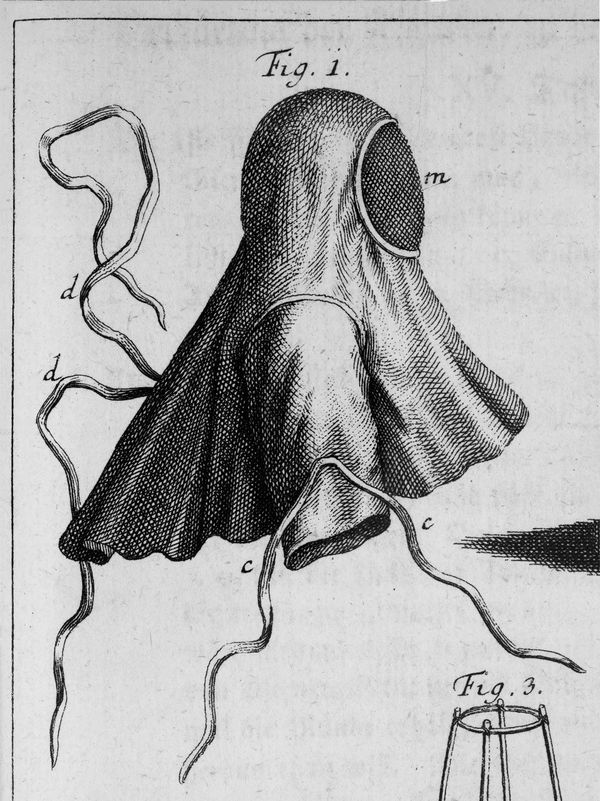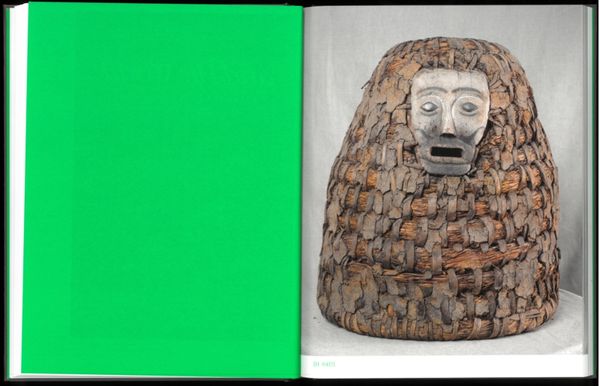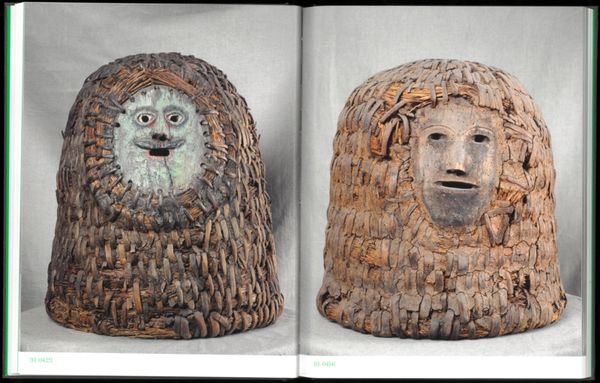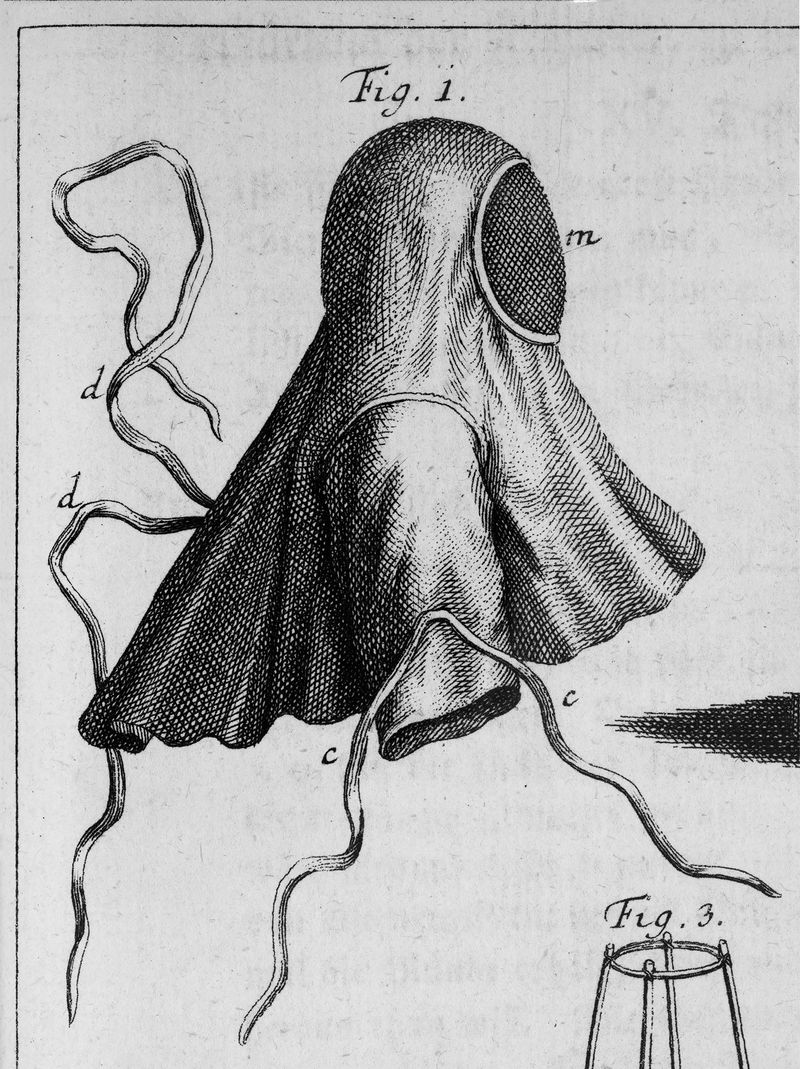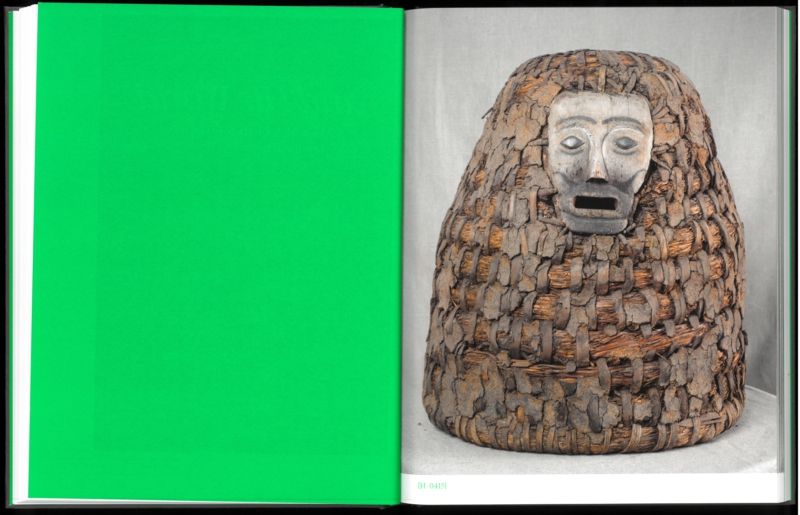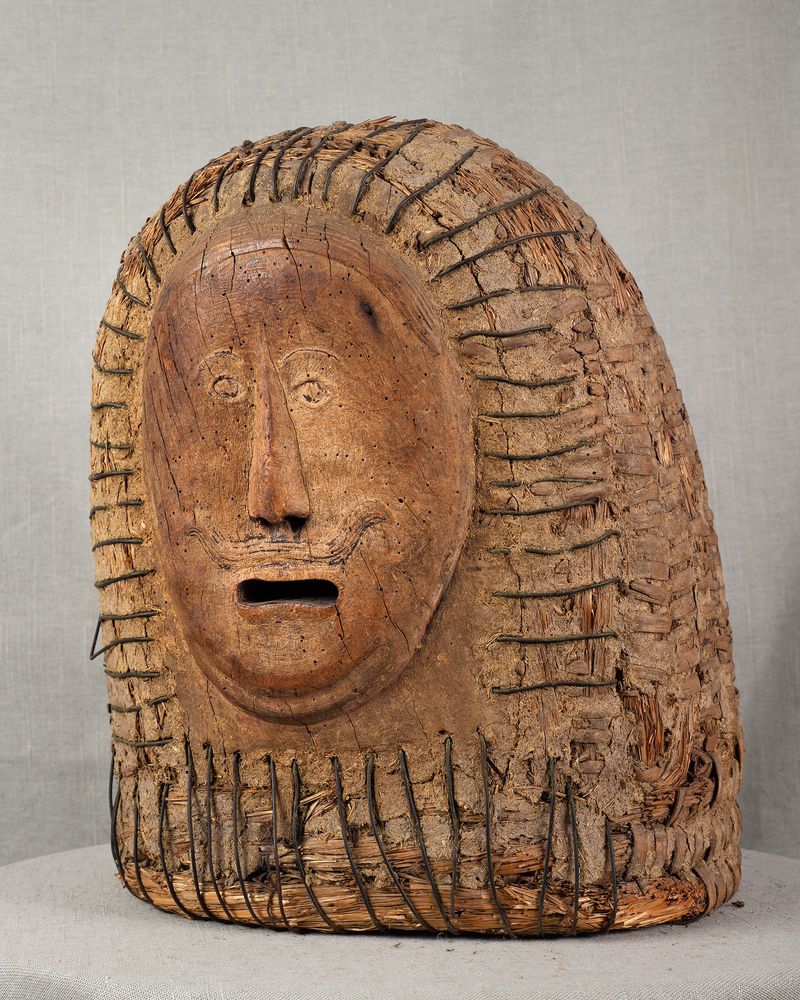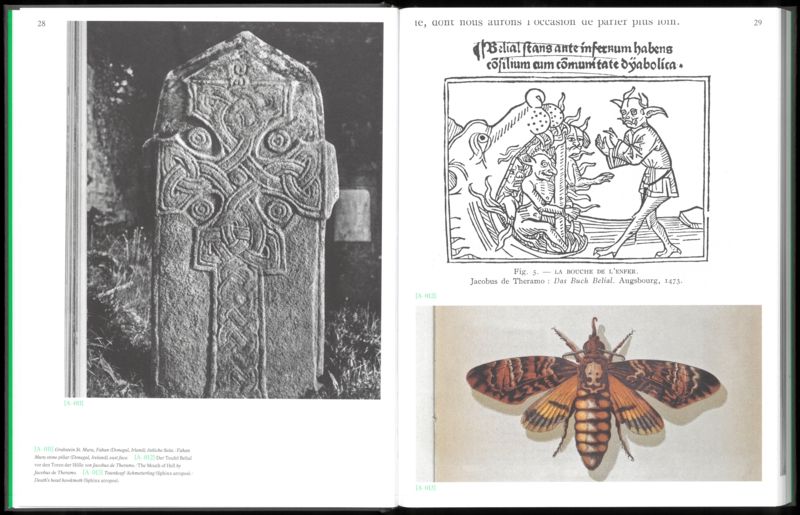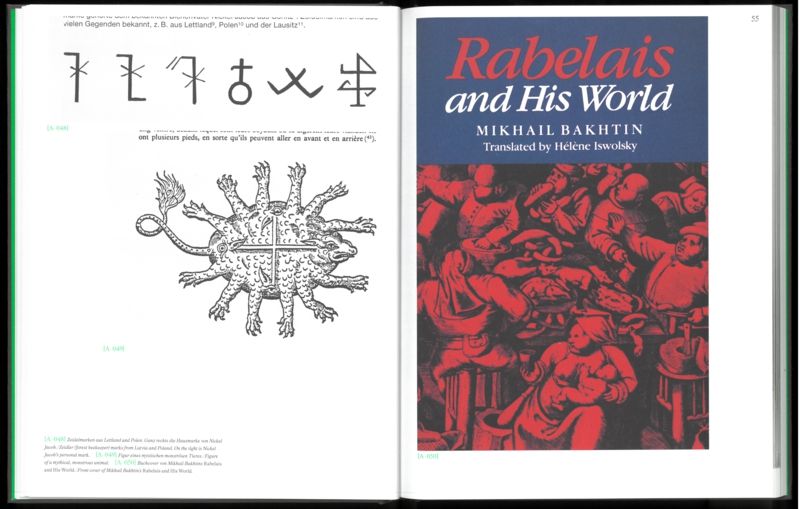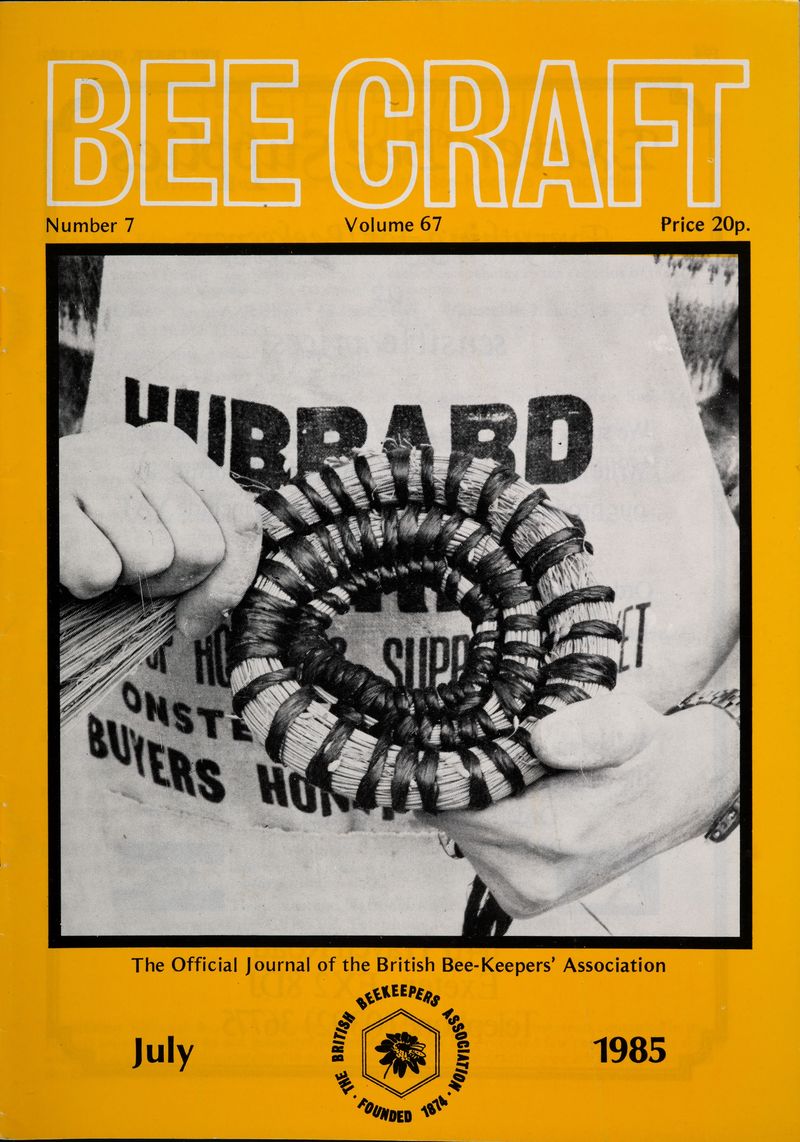Photobook Review: Bannkörbe by Aladin Borioli
-
Published14 Mar 2024
-
Author
Indexing a rare, ancient type of beehive, Bannkörbe is an other-worldly visual atlas blurring the lines between fields of knowledge. What can documentary art learn from ethnography, science from magic, architecture from bees, and the other way around?
Bannkörbe are a specific type of beehive to be found in northern Germany somewhere between the 16th and the 19th century. Incorporating wooden masks, they were sort of non-human bodies devoted to the protection of bees from evil spirits and all things alike. Rare artifacts during their time - beekeepers wouldn't own more than one, Bannkörbe remain largely undocumented today, following a destiny that most hives seem to share: their materials were fragile and would hardly make it against time, while raising little anthropological interest throughout history.
“For me, Bannkörbe encapsulated something central in beekeeping - the myths, beliefs and metaphors we inscribed on bees through centuries, for better or for worse”, says Borioli. “One example is the way we have seen bees through the lens of any political ideology: they’ve been fascists, monarchists, colonists, democrats. We keep looking at them as industrious, organised workers - something that isn’t necessarily true, and that led to overworking bees, treating them as machines” he adds. “Bannkörbe opened a lot of questions transcending bees, too. What kind of beliefs could motivate beekeepers to embrace them? They were definitely not religious in a monotheistic sense, but mostly pagan, which is pretty weird for the time and place”.
There are 59 remaining Bannkörbe in Germany and Borioli’s book, recently published by Spector Books as part of the C/O Berlin Talent Award 2023, is structured around them. The outcome is a visual story that stands at the crossroads of ethnography and documentary practices, challenging the limitations of both realms. How to make a photographic book about a series of almost identical objects living within a collection? How to articulate their affect, something that was meant to be experienced physically, through visual clues only?
The density of an object like Bannkörbe is hard to unpack. It was made by humans for both humans and bees. It responded to practical, productive logics while following magical, transcendental needs escaping them. How to look at it from a human body’s perspective, without being forgetful of its primary inhabitants - bees?
A large constellation of archival images encapsulates the 59, indexical photographs of Bannkörbe taken by Borioli. “Those photographs are a box within a box, that is the book” he says. Laid out full bleed, they are sequenced with almost no breaks to divide them. Scientific-like, photographic rigor clashes with their earthly matter. The masks seem to scream, making no sound at all. Within this silence, their power is hard to contain. Silence also comes to fit the expression of a conversation - that between bees and human beings - where words are of little use, and which is always haunted by a necessary degree of ambiguity.
Bannkörbe is part of a larger project called Apian, which Borioli defines as “a Ministry of Bees” - an expression that “stems from the idea that our political institutions have failed us, and that there’s no way to reform them from the inside. From here comes the need to build a parallel, DIY research exploring ecological questions”.
For more than 10 years - and for at least five more next, if not for a lifetime, Borioli says - Apian has been investigating the relationship between us and bees, and its expression through technology and different cultural artifacts. In Apian, beekeeping isn’t not only a subject but a method, too. Bees aren’t studied, looked at from a distance: they are an active part of a research that seeks to "include them in the least extractive possible way, which is probably by ordering them the least”.
The fundamental difference between humans and bees underlies all aspects of Borioli’s practice. “I would definitely say that the format of the work depends quite a lot on the fact that the subject of research is totally alien to us. Even when you work with other humans speaking your language, you realise there are many things you can’t understand about each other. With bees, this is definitely brought to another level. There aren’t many living beings as different from us as bees are, in terms of physiology. The distance between our and their world forces the work to question its shape all the time, to attend different methods and to be more recursive”. Immersed in the visual threads of Bannkörbe, we can almost seem to forget our human gaze, with all its rules and canons defining normality. Uncanny bodies evolve into giant mouth-shaped doors, laconic symbols merge with scientific drawings of honeybee organs. Can we dream of leaving our eyes for a while? “It’s interesting to think about the mask from the point of view of bees”, says Borioli. “We know they have quite a good-ish vision, and they can distinguish between different human faces. We can almost certainly say they would recognize the different faces on the Bannkörbe”.
Borioli's book can be seen as part of a larger story of image atlases. A landmark in this tradition was Aby Warburg’s Mnemosyne, a never-completed visual constellation started by the German art historian in 1927. Mnemosyne was aiming to write a new history of visuality, transcending the textual need of going from A to B. Both in its case and in that of Bannkörbe, a method based on printing, gathering, and juxtaposing images becomes an outcome in itself. “The archival images parts in Bannkörbe are the least obvious”, says Borioli. “They are there to raise all the questions, and to disturb linearity. They generate a sort of complexity and density, re-formulating knowledge in the hope that the reader can get lost in other topics”.
At the same time, the way Borioli photographed hives follows the rigor of archival methods: “I took pictures from all sides and angles. I wanted to create material that could be used for the form of research: this is why I’m adding all sources and including as much information as possible, dimensions, locations, dates, and so on. This kind of aims at making an object that can also be used in another context”. This structure, fluid and scrupulous at a time, allows for a book that speaks to magic as much as it does to science. Where classification and diligent indexing can exist alongside an other-worldly, spiritual way of looking at the world.
--------------
Bannkörbe is published by Spector Books
178 pp.
ca. 200 b/w- and color illustrations
thread-sewn hardcover
Leipzig January, 2024
ISBN: 9783959058049
Width: 20 cm
Length: 26 cm
Language(s): English, German
Editor: Veronika Epple, C/O Berlin Foundation
Designer: Marc Naroska, Max Schürmann
Text: Bas Blaasse
Artist: Aladin Borioli
--------------
All images © Aladin Borioli
--------------
Aladin Borioli (b. 1988) has been working on the Apian project since 2014. He lives and works in Frenchspeaking Switzerland. Apian is a Ministry of Bees (MoB) responsible for the relationship between humans and all bee species, working to maintain ties and foster new relations with bees. Mixing methods from anthropology and philosophy with the practice of art and beekeeping, Apian aims to build a refuge to encounter bees on a more egalitarian basis away from capitalist destructive practices.
Camilla Marrese (b.1998) is a photographer and designer based in Italy. Her practice intersects documentary photography, design for publishing and writing, aiming for the expression and visual articulation of complex issues.
